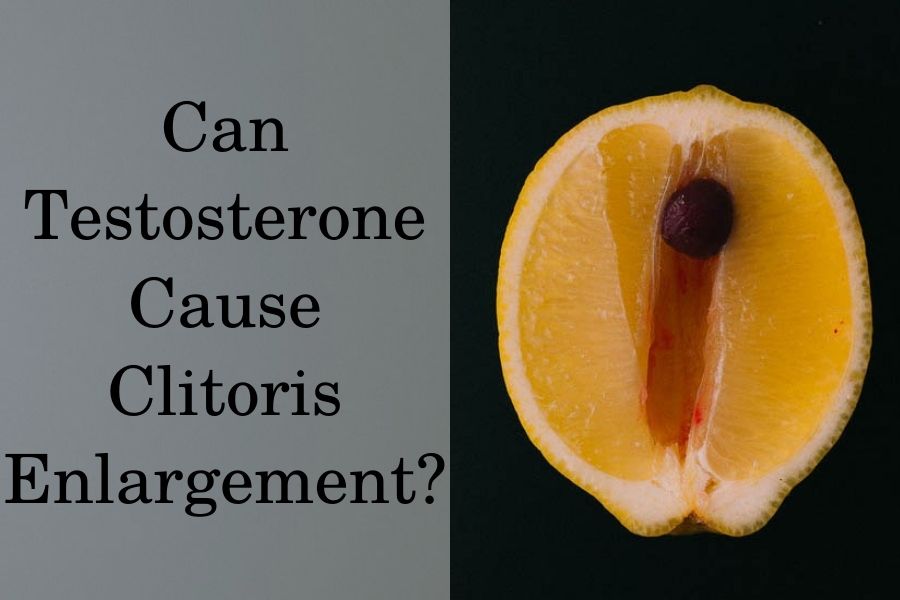Women have about 20 times less testosterone than men, but this doesn’t make the hormone less critical for female sexual function.
In fact, testosterone plays a critical role in female libido, arousal, clitoral and vaginal blood flow, lubrication, and the occurrence of female orgasms.
When women use testosterone treatment it can lead to side effects such as enlargement of the clitoris (clitoromegaly) and the development of masculine features in women. Although these changes are usually viewed as adverse reactions, this may be a desirable condition for patients undergoing female to male (FTM) gender reassignment.
Keep reading to learn more about the influence of testosterone on the clitoris and the possible benefits and side effects of testosterone replacement therapy (TRT) in women.
How testosterone affects clitoral growth
Most of the tissues in the female reproductive organs lose their receptors to testosterone and other male sex hormones (androgens) during embryonic development.
Scientists suggest that the clitoris is an exception and remains sensitive to androgens in adulthood. These receptors play a critical role in the swelling of the clitoris during sexual arousal.
In addition, the receptors in the tissues of the clitoris make it susceptible to the anabolic effects of androgens. Thus excess of testosterone stimulates the growth of the erectile tissues in the clit.
Related post: How to Lower Testosterone in Women
Researchers also regard the clitoris as the first organ to respond to testosterone increase and indicate elevated androgen levels in the female body.
What is more, the tissues of the clitoris actively transform T into dihydrotestosterone (DHT) which is 10 times more potent. Studies report that the clitoris and the labia majora are the female skin areas with the highest concentration of DHT.
Depending on the serum аndrogens levels and the duration of exposure, the hormones can lead to a significant enlargement.
How big can a clitoris grow?
In one 4-year study on FTM patients, average clitorial length, including the glans and the hood, increased from 14 mm to 46 mm. The growth was most rapid during the first year of therapy and then reached a plateau. The longest size achieved was 60 mm.
To put things into perspective, scientists suggest that the glans of the clitoris, which is the part not covered by skin, usually is about 3-5 mm in diameter. The hood or the body of the clitoris, which is covered by skin, varies typically between 5-25 mm.
Does taking testosterone cause clitoromegaly?
Clitoromegaly in adolescents and adults is defined as an enlargement of the glans above 8 mm and of the hood above 27 mm. TRT is one of the most common causes of this condition due to the specific effects of androgens on the clit.
One possible benefit of testosterone therapy is the increased sensitivity of the clitoris to sexual stimulation
Using lower doses and topical forms of testosterone rather than injections can minimize this risk. For example, one study in 81 women who took T transdermally for 6 months reported no side effects of the therapy on the clitoris.
That is unless the topical TRT is applied directly to the clitoris, in which case enlargement is entirely possible.
How to reverse clitoromegaly
Remember that clitoromegaly is a purely aesthetic problem and it is not dangerous. Unfortunately, the condition will not resolve on its own after discontinuing TRT and successful clitoromegaly treatment may require surgery.
The surgical procedure involves reducing the volume of the clitoris without affecting its sensitivity, and it is called clitoroplasty.
Apart from TRT, there are other possible causes of clitoromegaly, such as testosterone secreting tumors, clitoral cysts, and the use of performance-enhancing drugs.
Clitoromegaly may also be congenital (present at birth), in which case it is either due to a genetic condition (e.g., congenital adrenal hyperplasia) or the use of testosterone products by the mother during the pregnancy.
How testosterone helps with vaginal atrophy
The FDA does not approve the use of testosterone therapy in women. Yet, experts suggest that in some cases, TRT may be justified and thus prescribed off-label.
These include cases of vaginal atrophy and hypoactive sexual desire disorder (HSDD). Vaginal atrophy occurs when there is a deficiency of estrogen, such as during menopause.
In one study, 4 weeks of topical testosterone applied inside the vagina reduced the most common symptoms of vaginal atrophy, such as dryness and pain during intercourse.
Testosterone improves the condition by stimulating the growth and development of the cells in the vaginal epithelium. Still, the benefits of testosterone for vaginal health are independent and occur even when testosterone is converted to estrogen.
Topical testosterone improves sexual satisfaction in those with vaginal atrophy. Testosterone therapy did not change serum T levels in women, so there is no risk for side effects such as clitoromegaly.
How testosterone can help with HSDD
Hypoactive sexual desire disorder occurs when there is a complete lack of libido and an absence of sexual fantasies that causes personal distress. It is more common in postmenopausal women due to the decline in their hormonal levels.
Improving libido in HSDD requires systemic use of testosterone, such as injections, transdermal and oral formulations. Scientists recommend a treatment plan of 3-6 months of high physiological doses of testosterone for postmenopausal women with HSDD.
The therapy should be continued only if there are benefits for sexual health within the first 6 months. The experts also warn that the therapy’s safety has not been evaluated for longer than 24 months.
What are the side effects of testosterone treatment for females?
Clitoromegaly is just one of the side effects which can occur during testosterone therapy in women.
These side effects have the collective term virilization, which is the occurrence of masculine characteristics in the female body. Other aspects of the condition include:
- excessive body and facial hair growth (hirsutism)
- receding hairline and male-pattern balding
- acne
- increased sweating and oily skin
- deeper voice
- increase in muscle mass and water retention
Some of these adverse reactions, such as the changes in hair growth, balding, voice, and the size of the clitoris, may be permanent and will not go away after discontinuing testosterone therapy.
Get a free consultation with our medical expert for any questions about hormone replacement therapy


